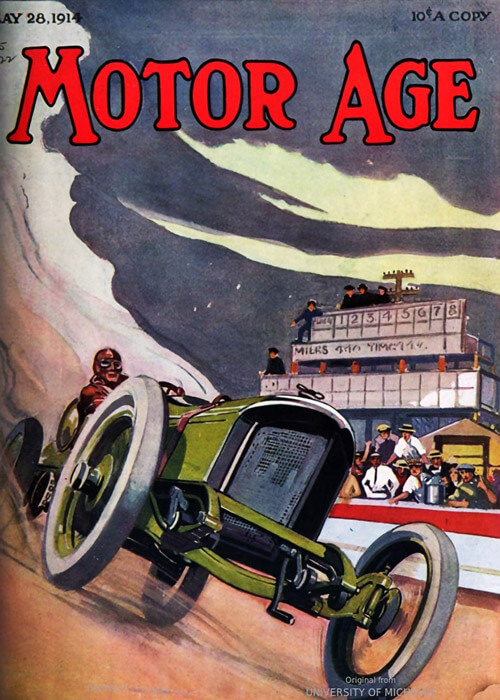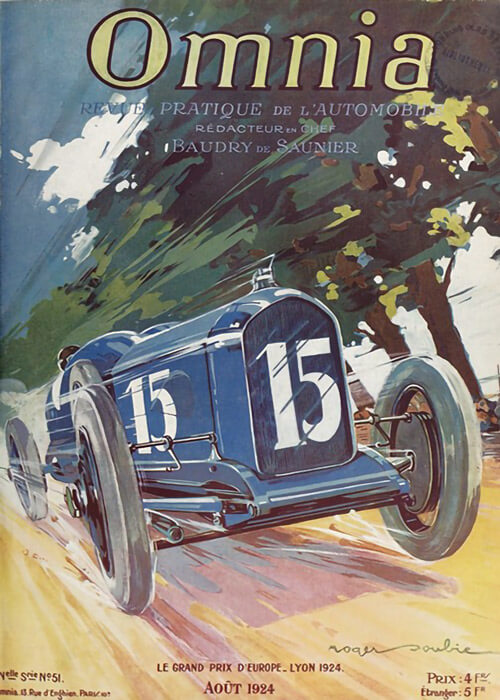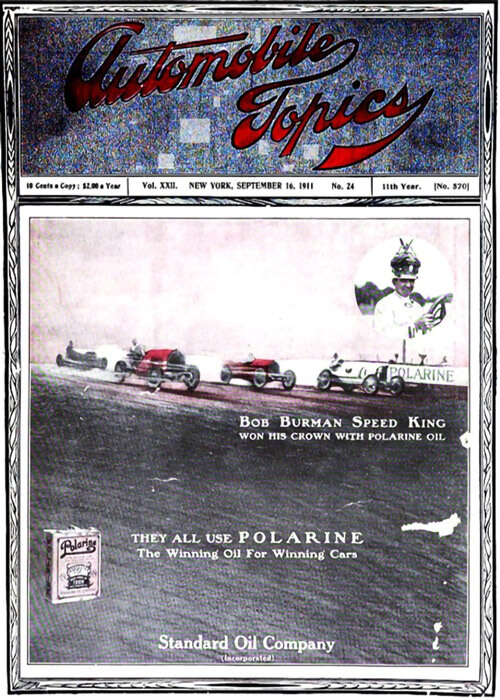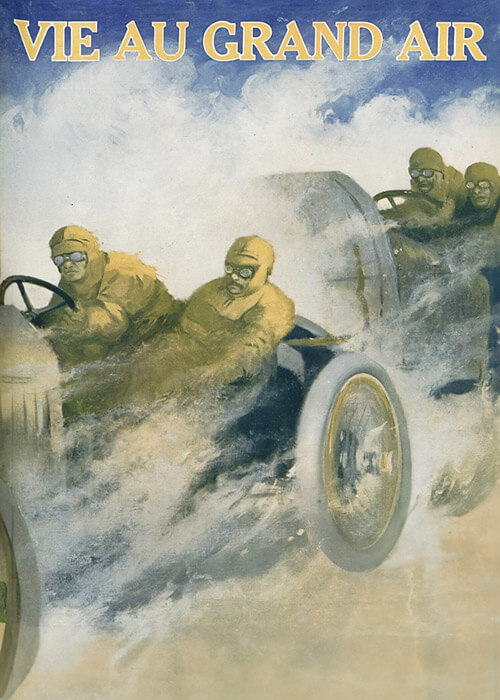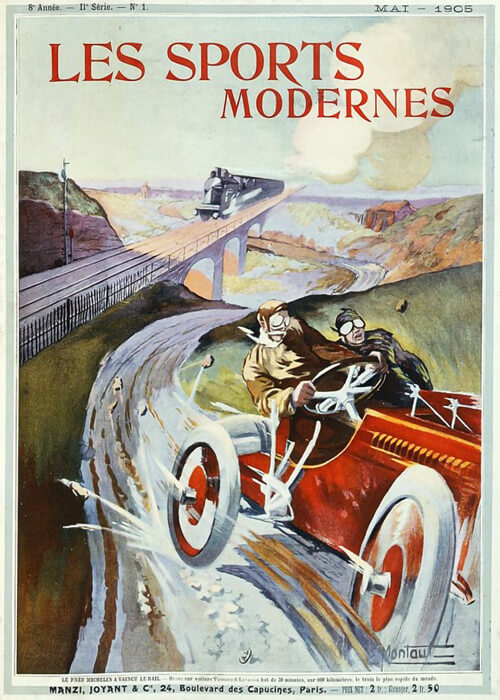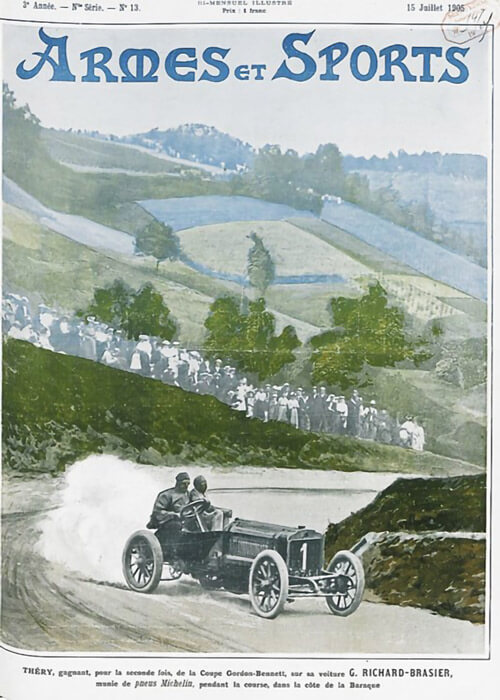In this September 1906 issue of the Automobile, some of the most successfull American cars for the Vanderbilt Cup are discussed.
The 120-hp Pope-Toledo, the 80-hp Apperson, the 90-hp Locomobile, the 50-hp Haynes and the novel 80-hp Maxwell.
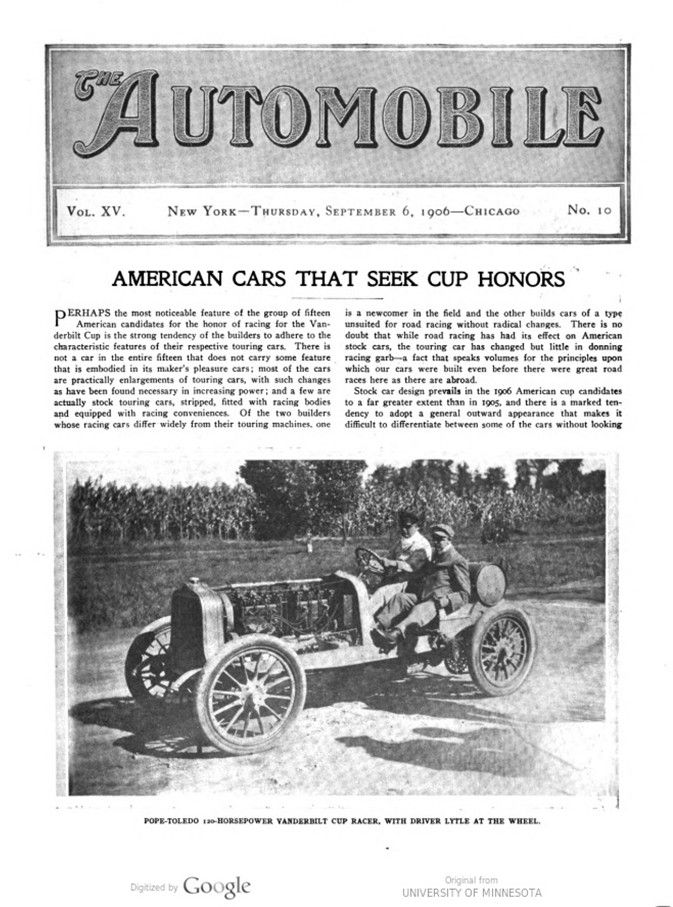
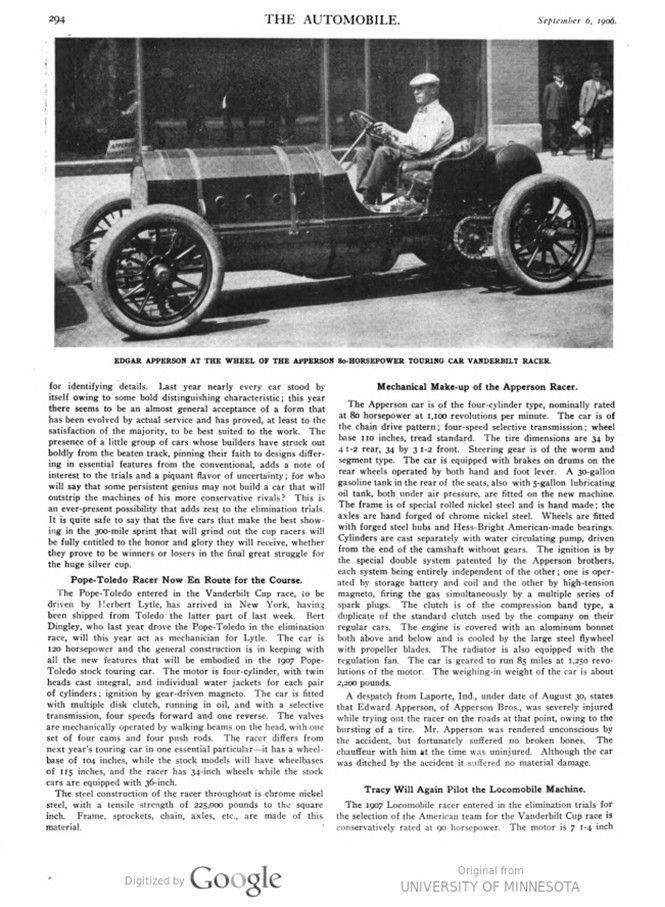
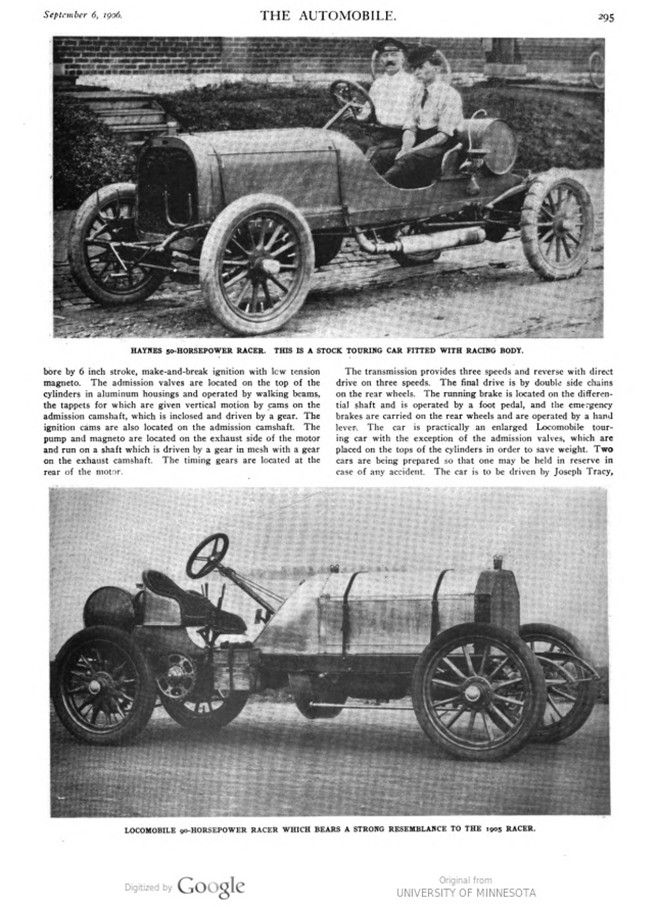
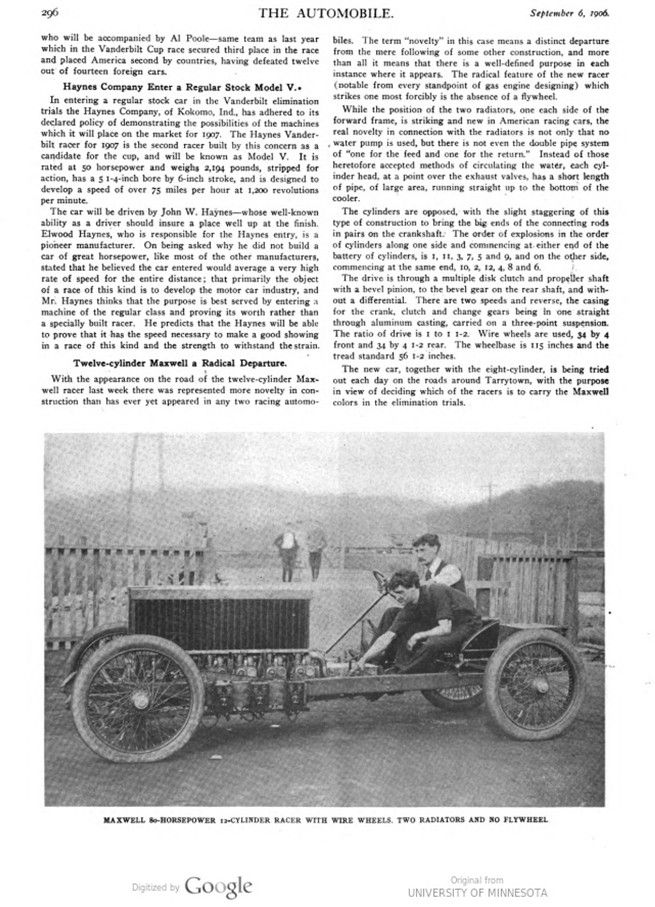
Text and photos with courtesy of hathitrust hathitrust.org, compiled by motorracingistory.com.
THE AUTOMOBILE; VOL. XV. NO. 10. September 6, 1906.
AMERICAN CARS THAT SEEK CUP HONORS
PERHAPS the most noticeable feature of the group of fifteen American candidates for the honor of racing for the Vanderbilt Cup is the strong tendency of the builders to adhere to the characteristic features of their respective touring cars. There is not a car in the entire fifteen that does not carry some feature that is embodied in its maker’s pleasure cars; most of the cars are practically enlargements of touring cars, with such changes as have been found necessary in increasing power; and a few are actually stock touring cars, stripped, fitted with racing bodies and equipped with racing conveniences. Of the two builders whose racing cars differ widely from their touring machines, one is a newcomer in the field and the other builds cars of a type unsuited for road racing without radical changes. There is no doubt that while road racing has had its effect on American stock cars, the touring car has changed but little in donning racing garb—a fact that speaks volumes for the principles upon which our cars were built even before there were great road races here as there are abroad.
Stock car design prevails in the 1906 American cup candidates to a far greater extent than in 1905, and there is a marked tendency to adopt a general outward appearance that makes it difficult to differentiate between some of the cars without looking for identifying details. Last year nearly every car stood by itself owing to some bold distinguishing characteristic; this year there seems to be an almost general acceptance of a form that has been evolved by actual service and has proved, at least to the satisfaction of the majority, to be best suited to the work. The presence of a little group of cars whose builders have struck out boldly from the beaten track, pinning their faith to designs differing in essential features from the conventional, adds a note of interest to the trials and a piquant flavor of uncertainty; for who will say that some persistent genius may not build a car that will outstrip the machines of his more conservative rivals? This is an ever-present possibility that adds zest to the elimination trials. It is quite safe to say that the five cars that make the best showing in the 300-mile sprint that will grind out the cup racers will be fully entitled to the honor and glory they will receive, whether they prove to be winners or losers in the final great struggle for the huge silver cup.
Pope-Toledo Racer Now En Route for the Course.
The Pope-Toledo entered in the Vanderbilt Cup race, to be driven by Herbert Lytle, has arrived in New York, having been shipped from Toledo the latter part of last week. Bert Dingley, who last year drove the Pope-Toledo in the elimination race, will this year act as mechanician for Lytle. The car is 120 horsepower and the general construction is in keeping with all the new features that will be embodied in the 1907 Pope-Toledo stock touring car. The motor is four-cylinder, with twin heads cast integral, and individual water jackets for each pair of cylinders; ignition by gear-driven magneto. The car is fitted with multiple disk clutch, running in oil, and with a selective transmission, four speeds forward and one reverse. The valves are mechanically operated by walking beams on the head, with one set of four cams and four push rods. The racer differs from next year’s touring car in one essential particular-it has a wheelbase of 104 inches, while the stock models will have wheelbases of 115 inches, and the racer has 34-inch wheels while the stock cars are equipped with 36-inch.
The steel construction of the racer throughout is chrome nickel steel, with a tensile strength of 225,000 pounds to the square inch. Frame, sprockets, chain, axles, etc., are made of this material.
Mechanical Make-up of the Apperson Racer.
The Apperson car is of the four-cylinder type, nominally rated at 80 horsepower at 1,100 revolutions per minute. The car is of the chain drive pattern; four-speed selective transmission; wheel base 110 inches, tread standard. The tire dimensions are 34 by 41-2 rear, 34 by 3 1-2 front. Steering gear is of the worm and segment type. The car is equipped with brakes on drums on the rear wheels operated by both hand and foot lever. A 30-gallon gasoline tank in the rear of the seats, also with 5-gallon lubricating oil tank, both under air pressure, are fitted on the new machine. The frame is of special rolled nickel steel and is hand made; the axles are hand forged of chrome nickel steel. Wheels are fitted with forged steel hubs and Hess-Bright American-made bearings. Cylinders are cast separately with water circulating pump, driven from the end of the camshaft without gears. The ignition is by the special double system patented by the Apperson brothers, each system being entirely independent of the other; one is operated by storage battery and coil and the other by high-tension magneto, firing the gas simultaneously by a multiple series of spark plugs. The clutch is of the compression band type, a duplicate of the standard clutch used by the company on their regular cars. The engine is covered with an aluminum bonnet both‘ above and below and is cooled by the large steel flywheel with propeller blades. The radiator is also equipped with the regulation fan. The car is geared to run 85 miles at 1,250 revolutions of the motor. The weighing-in weight of the car is about 2,200 pounds.
A despatch from Laporte, Ind., under date of August 30, states that Edward Apperson, of Apperson Bros., was severely injured while trying out the racer on the roads at that point, owing to the bursting of a tire. Mr. Apperson was rendered unconscious by the accident, but fortunately suffered no broken bones. The chauffeur with him at the time was uninjured. Although the car was ditched by the accident it suffered no material damage.
Tracy Will Again Pilot the Locomobile Machine.
The 1907 Locomobile racer entered in the elimination trials for the selection of the American team for the Vanderbilt Cup race is conservatively rated at 90 horsepower. The motor is 7 1-4 inch bore by 6 inch stroke, make-and-break ignition with low tension magneto. The admission valves are located on the top of the cylinders in aluminum housings and operated by walking beams, the tappets for which are given vertical motion by cams on the admission camshaft, which is inclosed and driven by a gear. The ignition cams are also located on the admission camshaft. The pump and magneto are located on the exhaust side of the motor and run on a shaft which is driven by a gear in mesh with a gear on the exhaust camshaft. The timing gears are located at the rear of the motor.
The transmission provides three speeds and reverse with direct drive on three speeds. The final drive is by double side chains on the rear wheels. The running brake is located on the differential shaft and is operated by a foot pedal, and the emergency brakes are carried on the rear wheels and are operated by a hand lever. The car is practically an enlarged Locomobile touring car with the exception of the admission valves, which are placed on the tops of the cylinders in order to save weight. Two cars are being prepared so that one may be held in reserve in case of any accident. The car is to be driven by Joseph Tracy, who will be accompanied by Al Poole—same team as last year which in the Vanderbilt Cup race secured third place in the race and placed America second by countries, having defeated twelve out of fourteen foreign cars.
Haynes Company Enter a Regular Stock Model V.
In entering a regular stock car in the Vanderbilt elimination trials the Haynes Company, of Kokomo, Ind., has adhered to its declared policy of demonstrating the possibilities of the machines which it will place on the market for 1907. The Haynes Vanderbilt racer for 1907 is the second racer built by this concern as a candidate for the cup, and will be known as Model V. It is rated at 50 horsepower and weighs 2,194 pounds, stripped for action, has a 51-4-inch bore by 6-inch stroke, and is designed to develop a speed of over 75 miles per hour at 1,200 revolutions per minute.
The car will be driven by John W. Haynes—whose well-known ability as a driver should insure a place well up at the finish. Elwood Haynes, who is responsible for the Haynes entry, is a pioneer manufacturer. On being asked why he did not build a car of great horsepower, like most of the other manufacturers, stated that he believed the car entered would average a very high rate of speed for the entire distance; that primarily the object of a race of this kind is to develop the motor car industry, and Mr. Haynes thinks that the purpose is best served by entering a machine of the regular class and proving its worth rather than a specially built racer. He predicts that the Haynes will be able to prove that it has the speed necessary to make a good showing in a race of this kind and the strength to withstand the strain.
Twelve-cylinder Maxwell a Radical Departure.
With the appearance on the road of the twelve-cylinder Maxwell racer last week there was represented more novelty in construction than has ever yet appeared in any two racing automobiles. The term „novelty“ in this case means a distinct departure from the mere following of some other construction, and more than all it means that there is a well-defined purpose in each instance where it appears. The radical feature of the new racer (notable from every standpoint of gas engine designing) which strikes one most forcibly is the absence of a flywheel.
While the position of the two radiators, one each side of the forward frame, is striking and new in American racing cars, the real novelty in connection with the radiators is not only that no water pump is used, but there is not even the double pipe system of „one for the feed and one for the return.” Instead of those heretofore accepted methods of circulating the water, each cylinder head, at a point over the exhaust valves, has a short length of pipe, of large area, running straight up to the bottom of the cooler.
The cylinders are opposed, with the slight staggering of this type of construction to bring the big ends of the connecting rods in pairs on the crankshaft. The order of explosions in the order of cylinders along one side and commencing at either end of the battery of cylinders, is 1, 11, 3, 7, 5 and 9, and on the other side, commencing at the same end, 10, 2, 12, 4, 8 and 6.
The drive is through a multiple disk clutch and propeller shaft with a bevel pinion, to the bevel gear on the rear shaft, and without a differential. There are two speeds and reverse, the casing for the crank, clutch and change gears being in one straight through aluminum casting, carried on a three-point suspension. The ratio of drive is I to I 1-2. Wire wheels are used, 34 by 4 front and 34 by 4 1-2 rear. The wheelbase is 115 inches and the tread standard 56 1-2 inches.
The new car, together with the eight-cylinder, is being tried out each day on the roads around Tarrytown, with the purpose in view of deciding which of the racers is to carry the Maxwell colors in the elimination trials.
Picture captions.
POPE-TOLEDO 120-HORSEPOWER VANDERBILT CUP RACER, WITH DRIVER LYTLE AT THE WHEEL.
EDGAR APPERSON AT THE WHEEL OF THE APPERSON 80-HORSEPOWER TOURING CAR VANDERBILT RACER.
HAYNES 50-HORSEPOWER RACER. THIS IS A STOCK TOURING CAR FITTED WITH RACING BODY.
LOCOMOBILE 90-HORSEPOWER RACER WHICH BEARS A STRONG RESEMBLANCE TO THE 1905 RACER.
MAXWELL 80-HORSEPOWER 12-CYLINDER RACER WITH WIRE WHEELS. TWO RADIATORS AND NO FLYWHEEL
